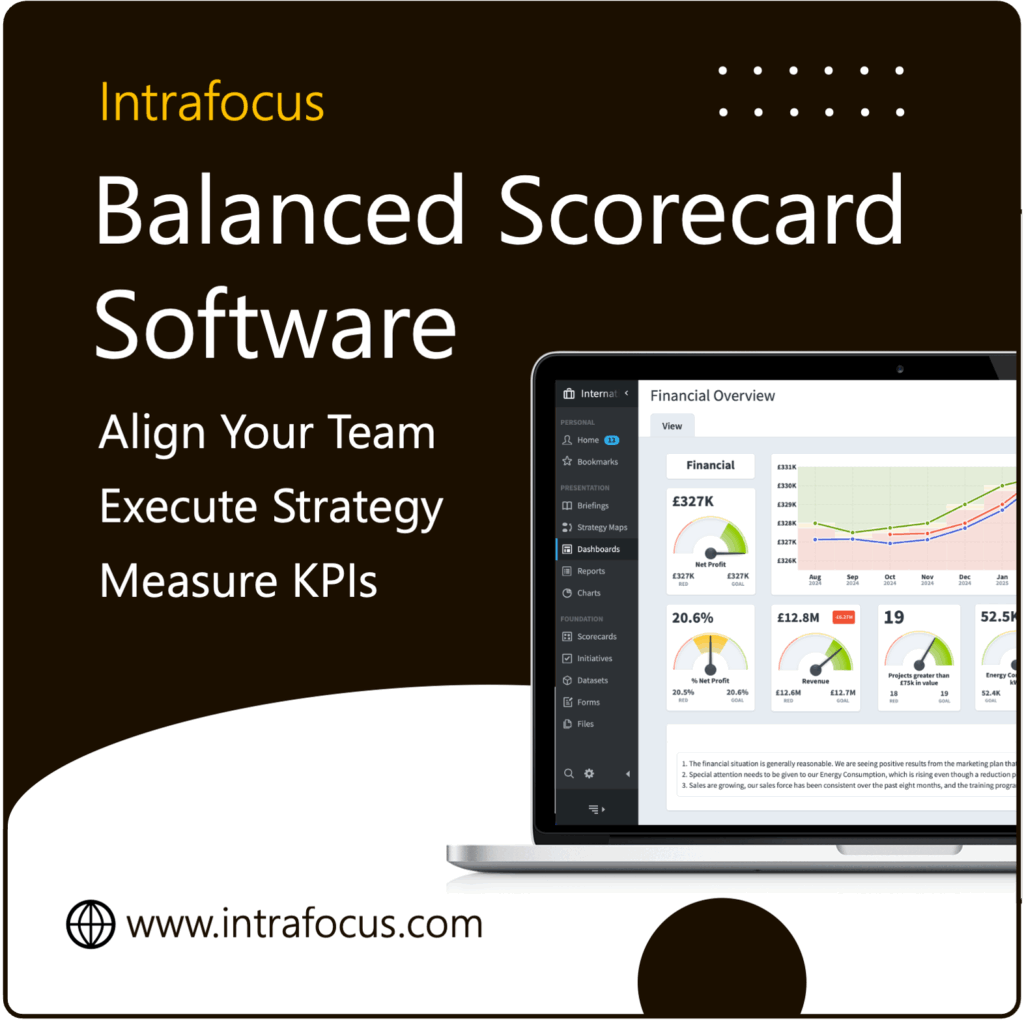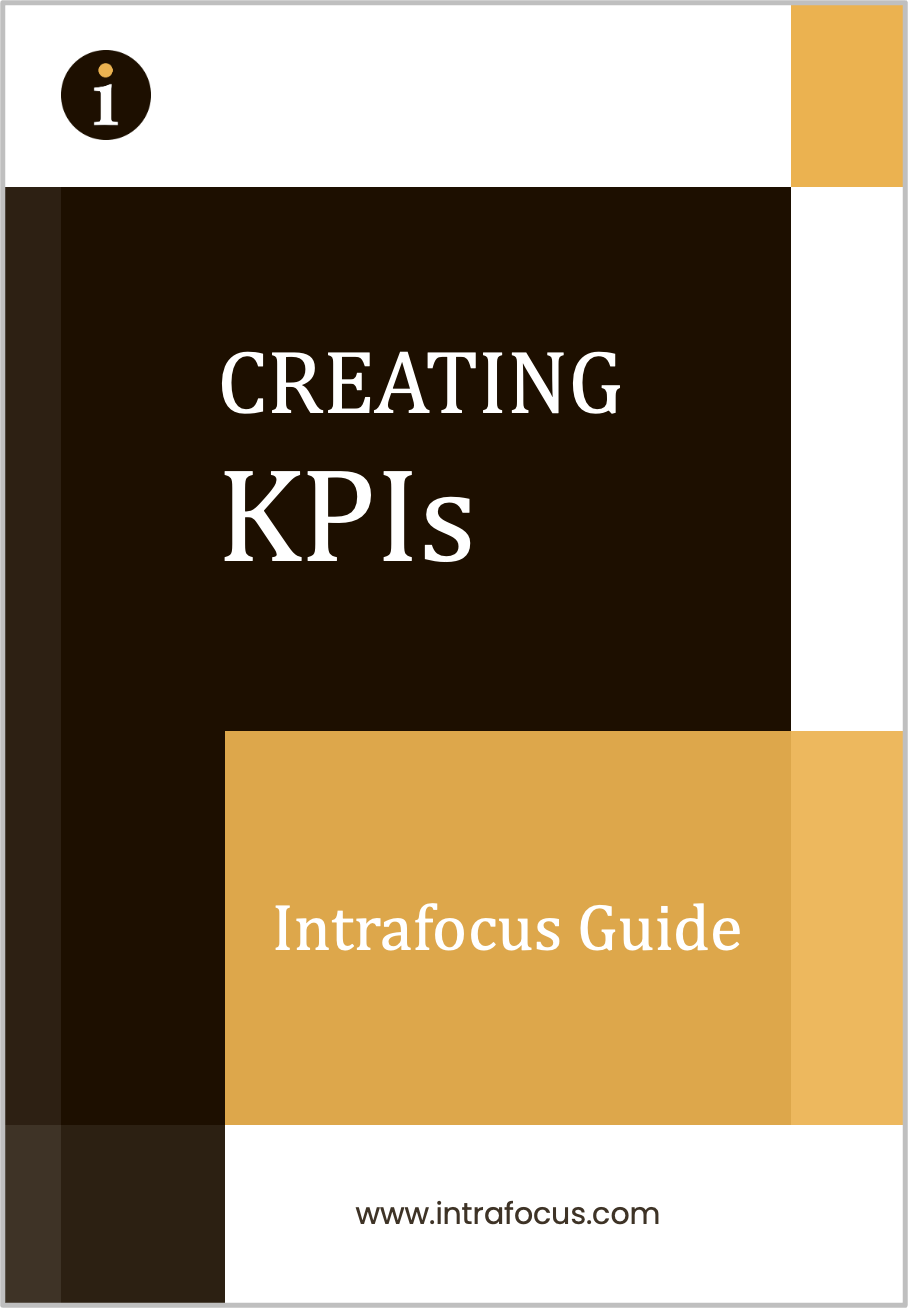Getting smart about creating business objectives – The Intrafocus guide “Developing Meaningful Performance Measures/KPIs” stresses that any metric should be based on a business objective. It seems obvious but in reality we often find ourselves measuring things just because they are there. When looking at business metrics we should always ask the question: will this measurement contribute to the business? If not, then why measure it? In other words, if the metric is not directly related to a business objective, it has no use.
When reviewing business objectives and certainly when creating new business objectives it is well worth adopting the SMART methodology. SMART is not new but it is often misunderstood. SMART is simply an acronym that provides guidance on how useful business objectives should be created.
Misunderstanding occurs when the wrong words or inaccurate words are used in combination causing duplication or overlap. For example ‘Attainable’ and ‘Realistic’.
Some authors have helpfully suggested that there are ‘Major’ and ‘Minor’ words that can be used for the SMART acronym and so through general agreement the ‘Major’ words are:
S = Specific
M = Measurable
A = Attainable
R = Relevant
T = Time-bound
Creating business objectives can be done at any time but tends to follow a strategic planning process where an overall company strategy has been determined and a set of broad goals have been decided. At this point, to ensure the strategy can be implemented, business objectives have to be set. Business objectives need to be focused, for each objective the following characteristics based on the SMART acronym should be looked for:
Specific – The objective has to be clear and unambiguous. We often see ‘Implement a Sales Plan’ as an objective that should contribute to the goal of increasing sales. However, ‘Implement a Sales Plan’ is neither clear nor an objective, it is simply an activity. A more specific sales oriented objective might be: ‘improve the time taken to convert a qualified lead into a sale’. This is not satisfactory but at least gets us on the way to creating a SMART objective.
Measurable – If movement towards an objective or away from it cannot be measured then the value of the objective is highly diminished (some would say worthless!). To measure progress an objective has to be measurable. More than this, it has to be measurable towards a purpose. In the example above there are no key measurable words, to improve the objective and make it measurable it could read as follows: ‘reduce the number of days taken to convert a qualified lead into a sale’. By adding ‘reduce’ and ‘days’ we now have a measurable objective.
Attainable – Sometimes the word Agreed is used here instead of Attainable. The sentiment however is the same. It is important that there is general agreement the objective is attainable. We frequently make the mistake of setting the outcome of our objectives too high with the result that from the start there is no agreement that the objective can be attained and worse still no desire to attain it. Using the previous example we can see that the objective may be attainable but there is not enough information to suggest what the expectation is. For example, would a reduction of one day be sufficient? To be more specific, we could restate the objective as: ‘reduce the time taken to convert a qualified lead into a sale to below 30 days’. We have now set an expectation for attainment.
Relevant – So far we have been very clear about the subject of the objective and how to measure it. The next test is to ensure that the objective is important to the company. You may wish to think about this at the beginning of the exercise, it doesn’t actually matter about the order in which SMART is applied. The key question to ask about relevance is: Does this objective contribute to the company’s strategy and goals? A good test to apply to this question is finding an individual who will take responsibility for the objective’s success. In any event, every objective should have an owner assigned; the owner should be an individual not a department or area.
Time-bound – Objectives that have no time frame will not be taken seriously. Without a time frame there is no target for completion and therefore no sense of urgency to complete. That does not mean that the objective should be completed in days or weeks, time frames of months and sometimes years are quite acceptable. The key is to ensure the time frame is commensurate to the work required to complete. Once again, using the example above, the completed objective might read as follows: ‘Reduce the time taken to convert a qualified lead into a sale to below 30 days by the end of this financial year’.
Our example has now become a SMART objective. It is a bit wordy, but it is clear and unambiguous. In reality, when such an objective is built into a business performance management system the statement itself will appear in the description and the various elements of the statement will be distributed as labels and identifiers, time frames etc. to provide a much neater solution. Nevertheless, the SMART exercise is still a good way to create valid objectives.
See how this relates to the development of meaningful key performance indicators (KPIs)



